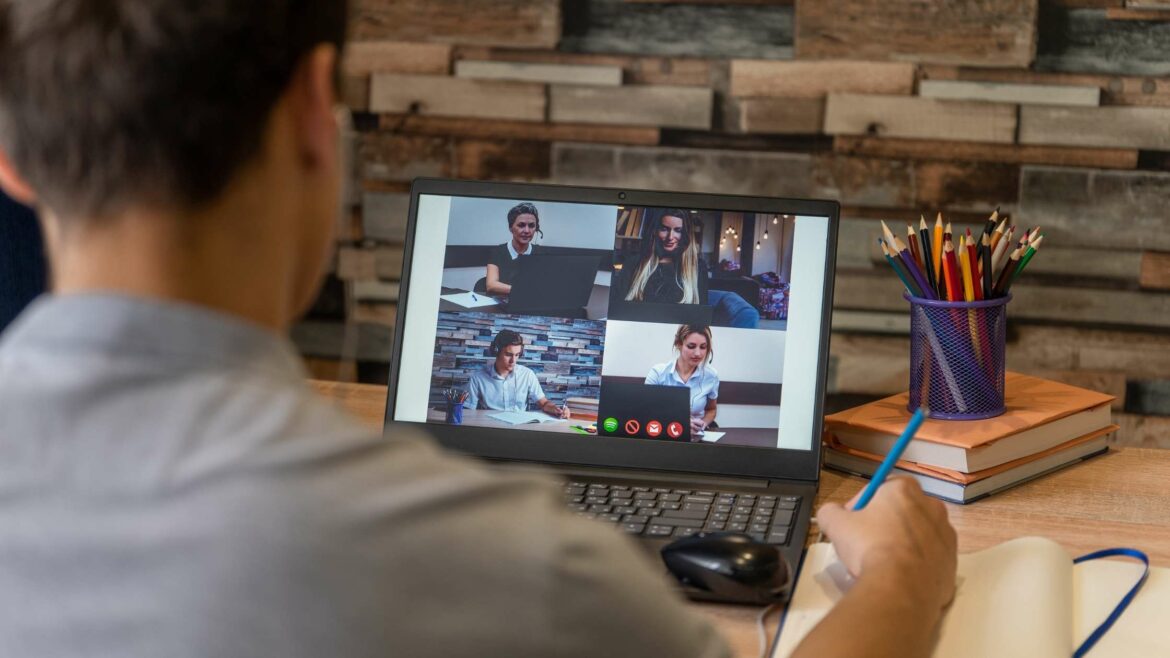The dynamic nature of the workplace has seen some incredible changes in the past couple of years with the rise of remote teams.
Given that 83 percent of employers have reported a successful shift to remote work, it is highly likely that we will see a major shift towards remote teams in the future.
As we see the growing trend of shifting to remote work, what will this mean for onboarding and training?
Before we get into this, we need to look at the importance of employee onboarding.
- Good employee onboarding practices can improve employee retention by 82 percent.
- Eighty-eight percent of organizations do a pretty lousy job with the onboarding process.
- Most organizations only focus on the first week of onboarding.
These simple facts are enough to understand that the onboarding process is crucial to employee engagement and happiness.
Now, Let’s look at employee training.
A survey conducted by TalentLMS revealed the following:
- Sixty-one percent of employees reported that they required more training to do their job.
- Eighty-eight percent of employees reported that access to training was important to them.
- On a scale of one to five, remote employees who received training rated themselves a four or five in productivity, time management, work-life balance, and communication.
Bringing all the statistics together, we see the importance of employee onboarding and training and the shift to remote work.
So, the question naturally arises: Should employees be onboarded and trained exclusively remotely?
I won’t answer that question. I’ll let the experts do it for me.
Below are expert opinions on whether employees should be onboarded and trained remotely or in the workplace.
Onboarding employees remotely works best when done in groups
“While there is no one method for training all remote teams, a 100% remote training system is effective.
With the increasing number of remote employees, we find onboarding them in groups works best. These recruitment cohorts enable team members to bond as they make the journey through the onboarding process together.
The shared experience of simultaneously starting a new job creates a lasting emotional resonance within their start-up group, and it also begins teambuilding from day one.
And when possible, additional in-house onboarding is an excellent way to increase engagement and familiarize employees with daily in-house operations and teams.”

Co-founder and CEO
SnackMagic
Onboarding requires two components—knowledge and culture. Also, onboarding requires a personal touch.
I think you can mix standardized elements with some personalization.
Standardization isn’t a bad thing. It gets the bases covered. But a personal touch is truly needed to make connections.
Can onboarding be completed remotely? Sure. I think of onboarding as having 2 components: there’s a knowledge component for policies, and then a social component for culture.
Anyone can learn policies online and I bet lots of us have friends we’ve never met in person.
So both components can be managed online. But it takes effort to do them both well.

Business Science Writer
The Metropreneur
Granting employee autonomy and freedom to complete onboarding tasks allows them to complete tasks without pressure.
The moment the newcomers join our company, they get the personalized onboarding plan described in Notion. They can find there a short guide with a to-do list for the first days and links to essential resources, f.e. information about offered benefits.
Moreover, we don’t set specific deadlines to accomplish onboarding tasks. Giving employees autonomy and freedom allows them to adjust their tasks to their own needs without stress and pressure.
During the first weeks, we use a very handy app – Donut, integrated with our slack channel. It supports us in the remote onboarding process by offering the new hires helpful tips and suggestions and assigning them new onboarding tasks.
Apart from that, our new employees participate in the video calls with the heads of all departments. It is a fantastic opportunity to get to know the company inside out: the products, the culture, the values, and build first business relationships.
To make the first days less stressful, each of our new hires gets their special welcome package with our merchandise. For instance, an integral part of our culture is wearing slippers in the office, so every remote worker gets their pair, too! 🙂
Every few weeks, we also encourage our employees to answer a few simple survey questions about how they feel at work to keep our close eye on new employees’ satisfaction and happiness.

Head of People and Culture
Tidio
When implementing remote onboarding, make sure employees feel like they have a sense of belonging.
We tried both strategies here at Kotobee and we finally reached a conclusion that onboarding training employees completely remotely works just as fine as in-person onboarding.
It definitely has its share of challenges, but if you use the right tools and strategies then this won’t pose as a problem.
One of the most important things that companies need to add to their remote onboarding strategy is making sure new hires feel welcome and part of the team.
An example of this, which we already started implementing, is sending them a welcome video from their team a week before they start working and then send another welcome email on the day they start work where they have the chance to be greeted by everyone in the company.
As for employee training, a personalized approach is definitely the best option that would achieve the best results and produce a high return on training investment. The downside for it is being timely and a bit costly but we found that employees were way more efficient and productive after receiving such tailored training.
We currently do this by first, evaluating each of our employees’ skills and needs that would best fit their roles in the company and then create a training plan for each one.

Business Development Manager
Kotobee
A hybrid setup—the best of both worlds—is the solution.
Hybrid Workplace Training and Onboarding is a new way to deal with it.
As a training professional, you want to break down all the training information into pieces that are easier to understand. With visually appealing online materials and interactive designs, you will keep them engaged, apprehensible and can improve their overall learning experience.
Training and L&D programs in a hybrid setup can be challenging, but by having the right technology in place, effective virtual delivery and effective hybrid delivery of your training are possible.

Director of Sales and Marketing
SEOBlog.com
A standardized training is necessary when it comes to matters that pertain to all employees.
It all depends on the work setup and the job role. Due to the pandemic, a lot of companies are doing so–for the meantime–because the situation demands it.
However, in the future, I believe that only companies willing to embrace a hybrid or a fully remote setup will want to onboard and train employees fully remotely.
Remote companies onboard and train employees fully remotely because the jobs they hire can all be done remotely. On the other hand, companies in a hybrid setup are only likely to train and onboard remotely for jobs where this is possible, like for VAs, writers, SMM, and the like.
Hybrid companies are more likely to do in-person onboarding for employees whose tasks and job roles require office presence.
It’s unlikely for employees to train and hire remotely if they intend them to be present in-office. There will be a mismatch, and it’s a waste of time and resources. They’ll likely indicate it in the job ad.
A one-size-fits-all training that includes everything there is to know about the company, like policies, regulations, general workflows, are necessary for the benefit of all types of employees, regardless of job roles. However, there should also be a personalized training based on specific roles.
Employers need to make sure that the process should be well-defined and organized.
For fully virtual teams like ours, training employees remotely is the only option. But even when colleagues aren’t meeting face-to-face, it’s possible to design a process that is both effective and streamlined while remaining personable and welcoming for new team members.
Making new hires feel like valued members of the team could start with something as simple as announcing the news in a general company Slack channel, where current team members can say hi and get acquainted.
Whatever you choose, be sure to define training processes and steps before bringing on any new employees so the process is organized and so onboarding information is ready and can be easily distributed to each new team member.
If you don’t have a dedicated HR department, it can also be useful during the onboarding process to assign a more experienced employee with the task of serving as a mentor or being the go-to person for each new team member.
This not only boosts your veteran employees’ confidence, but also helps build camaraderie in the workplace and ensures that every trainee has someone to turn to with questions, making the onboarding process faster and smoother for all involved.

CEO and Co-Founder
Virtual Vocations, Inc
There is no one-size-fits-all solution. Managers must employ onboarding and training solutions as per requirements.
Onboarding new employees completely virtually is a new concept that, due to the pandemic, more and more companies are embracing.
At The Darl this is how we’ve always operated, but I do understand the skepticism that others had about it, however, it is completely possible to do it.
Training shouldn’t be “one size fits all”, you can’t do just one Zoom meeting and expect the person to know everything in just one hour. You should try and make it as dynamic, interactive and informative as possible, and keep in mind that you will need to have multiple video sessions with the person in order for them to have a better grasp on the company’s philosophy.
It is still important to develop a connection with the new employee, because you are building the foundation for their future workspace, so you definitely shouldn’t ignore the social aspect of the onboarding sessions.

Founder and CEO
The Darl
Remote training and onboarding allows for sessions to be recorded, published, and accessed for future reference.
Generally, I have not found in-person training or onboard to better than remote.
In fact, remote training in this capacity is much more scalable vs. people crowded in a conference room looking at a screen or monitor. It also makes it easier to record and publish for future training or re-visiting trainings.
The question of personalization or universal training is a good one. Certainly, universal training is more scalable and standardizing is good for certain role functions, but in any knowledge worker role, creativity and a person’s unique approach to doing a job is a major factor in success so it’s important not to stifle that by forcing everyone into a box.
I generally start with more universal training with follow-up one-on-ones to show that the worker can bring their own approach to the role. This is also important to empower workers because nobody wants to feel like a cog in the system.

Co-Founder
Markup Hero
Remote onboarding and training can and should be personalized.
Companies should switch to remote onboarding for all employees. This creates a fair and even onboarding experience for all employees. Most components of the training should be one size fits all, but with added personalized materials to help employees get settled in to their new roles.
Here are a few ways to personalize the onboarding experience:
Pair up new employees with a work buddy – For both in-person and remote work, this helps new employees learn the ropes and feel comfortable in their new role faster. Having a buddy gives them a trusted person to be able to ask questions, learn the tricks of the trade, and that person becomes their first work friend, which is an important step in settling in to a new job.
Provide a digital welcome packet with important information all in one place – The welcome packet includes their username and passwords, introductions from their colleagues, contact information for managers and everyone on their team, and PDFs of company policies. We created this so that the most important information is easily accessible and all in one place.
To expedite the onboarding process, switch to using video and interactive virtual training.
You can record training and onboarding videos for new hires to watch rather than having everything done live (either in person or remotely). Save the live training for things that employees will have more questions on and use that time to go over nuances that are harder to convey in a recording.
The added bonus of recorded content is that employees can go back and refer to it when they have a question, rather than having to reach out and wait for an answer.
In-person onboarding and personalized training has a unique relationship-building characteristic.
I love training and onboarding new team members in-person. There is an element of relationship development that can’t be replace via Zoom.
I also think trainings should be personalized to some degree. The basic learning can be done watching videos or in a group setting but the job specific training can be personalized. Personalized learning allows for asking questions and truly learning the material.

Productivity Coach
SO Productive
Learnings and Summary
What we can draw from the opinions of our experts is that we should not be afraid of remote onboarding and training.
There are jobs and situations where it would be more compatible to do so.
Now, it is true that in-person onboarding and training do add the value of human connection. But we’ve also seen that personalizing remote onboarding and training is possible.
There are ways to allow the effect of the human connection, virtually, ensuring that new employees get a sense of belonging and camaraderie.
What works best is remote onboarding and training in groups and allowing them to have some autonomy and freedom to complete their tasks.
That being said, it is important to make sure that the processes for onboarding are done in a neat and organized manner.
One way of ensuring this is to have a standardized onboarding process for matters pertaining to all employees and then adjust for remote vs. in-person among different employees.
Ultimately, the benefits of remote onboarding and training seem to outweigh the flaws.
For one, sessions can be recorded, published, and accessed for future reference.
Given all the positives, humility calls us to also admit that there is no “one-size-fits-all” solution. Companies will have to adjust according to their own needs and those of their employees.
The best solution might be a hybrid model since it allows the best of both worlds.

Carlo Borja is the Content Marketing Manager of Time Doctor, a workforce analytics software for distributed teams. He is a remote work advocate, a father and a coffee junkie.




